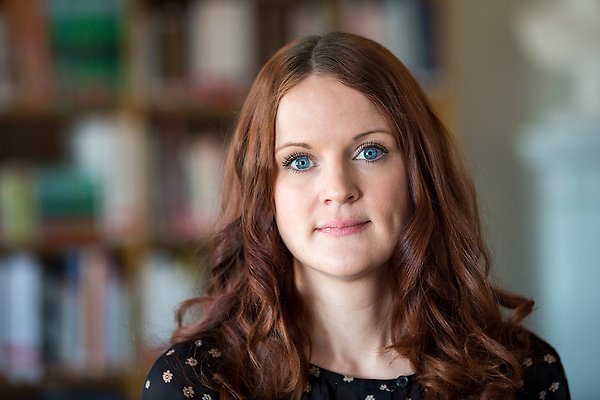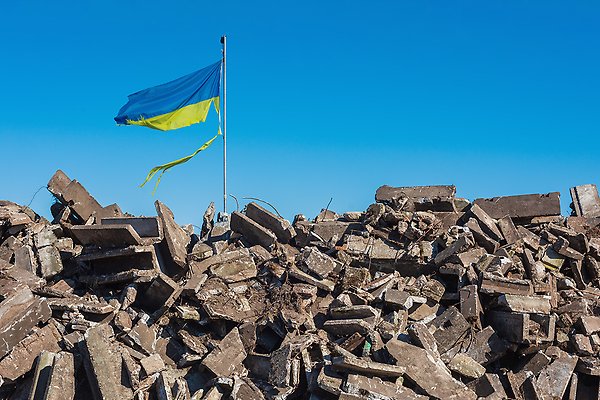Still many conflicts in the world in 2023

In 2022, the number of deaths in active conflicts in the world had doubled. It looks like the dark trend will continue. Photo: Getty Images
The number of conflicts in the world increased in 2022 and the negative trend seems to have continued in 2023, according to Therese Pettersson, Research Coordinator and Project Manager at the Uppsala Conflict Data Program (UCDP).
Every year, she and her colleagues at the UCDP conflict database summarise the number of conflicts in the world. In 2022, the number of deaths in active conflicts in the world had doubled. It is still difficult to say anything certain about the 2023, but Therese Pettersson guesses that the dark trend will continue.
“We will have at least as many wars as last year, maybe even a few more. Wars are conflicts that cause at least 1,000 deaths during the year. Last year was an extreme year in terms of deaths and a huge increase from the year before. But even before that, we saw an increase, and that increase will continue, even if the figures for 2023 do not reach the level of the record year 2022.”
End of the war in Ethiopia
An important reason for the increase in 2022 was the war in Ethiopia, which left more than 100,000 people dead. That war ended in November last year.
“The war in Ukraine continues with the same, if not even higher, intensity, and then there is the war in Gaza. It is definitely a big war, but it is not yet as big as Ukraine or Ethiopia was last year,” says Therese Pettersson.

Therese Pettersson, Research Coordinator and Project Manager at the Uppsala Conflict Data Program (UCDP). Photo: Mikael Wallerstedt
Collecting data on conflicts in the midst of ongoing wars is a challenge for researchers. Not only is the infrastructure often destroyed, but the number of casualties is a sensitive military secret.
“We depend on open sources and on information published either by the news media or by human rights organisations. There are chats and twitter accounts that can be very useful, but you always have to know where the information comes from and try to confirm it with original sources.”
The Program tries to gather information as widely as possible, but if a government has tight control over internet coverage or the news media, it can be very difficult.
Collecting data for research
The Uppsala Conflict Data Program is a world leader in statistics for civil war research. The main focus is to collect data that can be used in the research community, but the database is also used by journalists and policy makers and different types of organisations.
“In the last year, users came from as many as 197 different countries, mostly from the USA and European countries,” says Therese Pettersson.
So what does the research say about the increasing number of wars in the world?
“One factor is new wars breaking out, but it is also a matter of not being able to resolve the wars that are already ongoing. There are various explanations, but one aspect is that it has been very difficult for the UN, for example, to act,” says Therese Pettersson.
“In the early 1990s, we also had a very high number of ongoing conflicts, and a great deal of mediation and peacekeeping efforts were deployed. Many peace agreements were entered into, something we are not seeing as much of now.”
Increased global tensions
One explanation is the increased global tensions between the USA, Russia and China, which makes it difficult to organise UN operations.
“It is also much more common to interfere in each other's conflicts, sending troops or fighter jets to fight in a conflict that is not your own. This makes conflicts more difficult to resolve and last much longer. It adds resources to the warring parties so they can fight more and for longer.”
Is there a risk that wars can lead to more wars, creating a snowball effect?
“There is a concern that what is happening in Gaza could lead to a regional war because there are so many tensions between different countries that are allied in different ways. If there are a lot of people fleeing to neighbouring countries, this could increase tensions. Refugee flows easily lead to new conflicts.”

The war in Ukraine continues with the same intensity. Destroyed Ukrainian building and damaged flag in the wind. Photo: Getty Images
Another interesting development is the return of international conflicts, such as the war between Russia and Ukraine.
“It is quite unusual for two states to fight each other. It is more common to see a rebel group fighting within a country. We are seeing this in quite a few places, which is worrying,” says Therese Pettersson.
Annica Hulth
Uppsala Conflict Data Program
The Uppsala Conflict Data Program (UCDP) is the world's leading provider of data on organised violence and the oldest ongoing civil war data collection project, with a history spanning almost 40 years. The UCDP definition of armed conflict has become the global standard for how conflicts are systematically defined and studied.
